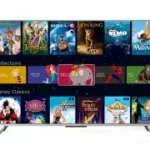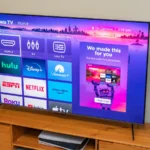“Your Brand is What People Say About You When You’re Not in the Room” – Jeff Bezos
Employer Branding: More Than Just a Buzzword
In today’s competitive job market, attracting and retaining top talent is no longer just about offering a good salary. Companies that invest in employer branding build a strong reputation, create a desirable workplace culture, and establish themselves as employers of choice.
But what does successfull Employer branding look like in action? Let’s explore real-world case studies from Tesla, Nissan, and Fiverr before looking at the trends shaping employer branding in 2025.
Case Studies: Employer Branding Done Right
Tesla: The Power of Innovation and Purpose
Tesla has built its employer brand around a mission—accelerating the world’s transition to sustainable energy. Employees at Tesla don’t just work for a paycheck; they work for a purpose. This sense of mission attracts top engineering and tech talent passionate about innovation and sustainability.
Key Takeaways:
✔ Purpose-driven branding helps attract passionate employees.
✔ Innovation and cutting-edge technology enhance brand appeal.
✔ Employees want to feel like they’re contributing to a bigger goal.
Nissan: Investing in Employee Growth
Nissan’s employer branding strategy revolves around learning, growth, and diversity. The company offers leadership development programs, cross-functional career opportunities, and a strong commitment to work-life balance. By emphasizing professional development, Nissan attracts ambitious talent eager to grow within the company.
Key Takeaways:
✔ Career development programs strengthen employer branding.
✔ A culture of diversity and inclusion makes companies more attractive.
✔ Work-life balance is increasingly important to employees.
Fiverr: Flexibility and Freedom at Work
Fiverr, a leading freelance marketplace, doesn’t just help freelancers find work—it embodies the flexible work culture itself. Fiverr attracts talent by offering remote work, autonomy, and a fast-paced, innovative environment. By aligning its employer brand with the growing demand for flexibility, Fiverr stands out in the job market.
Key Takeaways:
✔ Flexibility is a major driver of talent attraction.
✔ Remote work and autonomy make companies more appealing.
✔ A strong digital presence enhances employer branding.
Employer Branding in 2025: The Future of Talent Attraction
As we approach 2025, employer branding is evolving to meet new workforce expectations. Here’s what companies need to focus on to stay competitive:
1. Employee Experience is the New Marketing
Candidates trust employee reviews more than corporate statements. Platforms like Glassdoor and LinkedIn now shape employer perception more than ever. Companies must prioritize authentic employee experiences and transparent communication.
2. AI and Data-Driven Branding
Organizations are leveraging AI to personalize recruitment marketing, analyze employee sentiment, and improve engagement strategies. AI-driven employer branding ensures that companies attract the right talent efficiently.
3. Sustainability and Social Responsibility Matter
Modern job seekers want to work for companies that prioritize sustainability, ethics, and social impact. Brands that ignore these factors will struggle to attract young, purpose-driven professionals.
4. Hybrid and Remote Work is Non-Negotiable
The flexibility trend isn’t fading. In 2025, companies that offer hybrid or fully remote work options will have a significant advantage in attracting and retaining talent.
5. Employer Brand ≠ Consumer Brand
Companies can have strong consumer brands but weak employer brands. Organizations must invest in employee storytelling, workplace culture, and internal branding to strengthen their reputation as employers.
Final Thoughts: Build a Brand Employees Want to Work For
Employer branding is no longer just an HR initiative—it’s a business strategy. Companies that successfully attract and retain top talent will gain a long-term competitive advantage. By learning from industry leaders like Tesla, Nissan, and Fiverr, organizations can create strong employer brands that appeal to the workforce of the future.
Annual performance reviews are not enough. High-performing organizations integrate feedback into daily interactions, ensuring continuous improvement. Regular check-ins, one-on-one meetings, and team retrospectives help employees stay aligned and motivated.
For example, Adobe eliminated annual performance reviews in favor of frequent, real-time feedback sessions. This shift led to higher engagement and productivity.
Companies that encourage feedback are more agile. They can quickly identify problems, adapt to change, and improve processes based on real insights from employees. Dgjoyeros















































